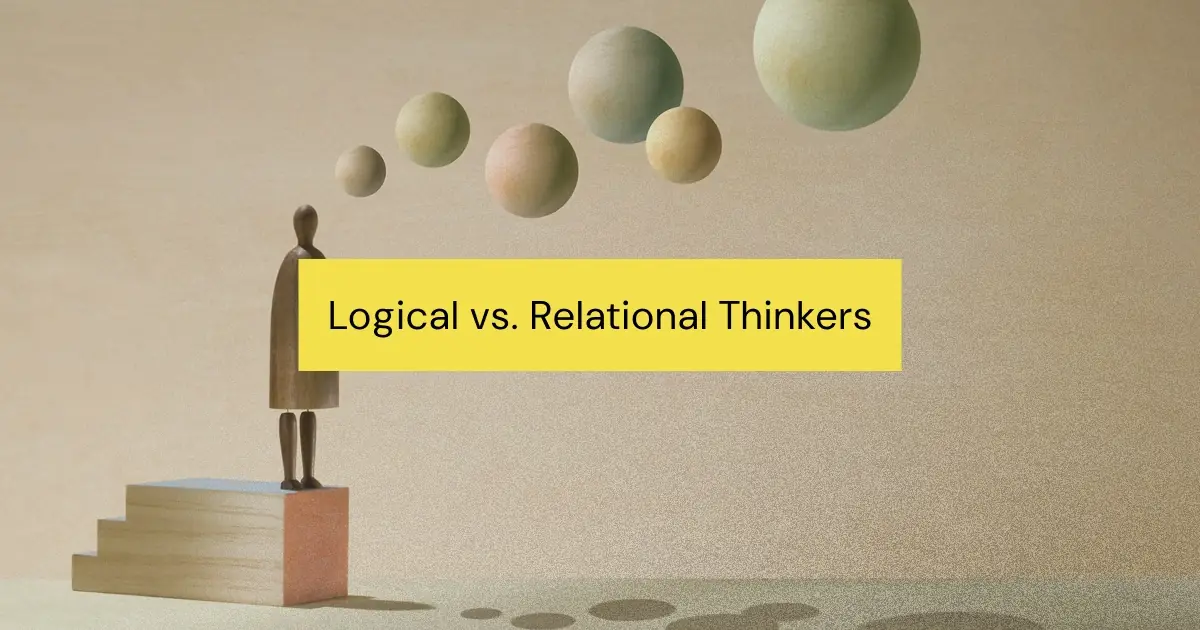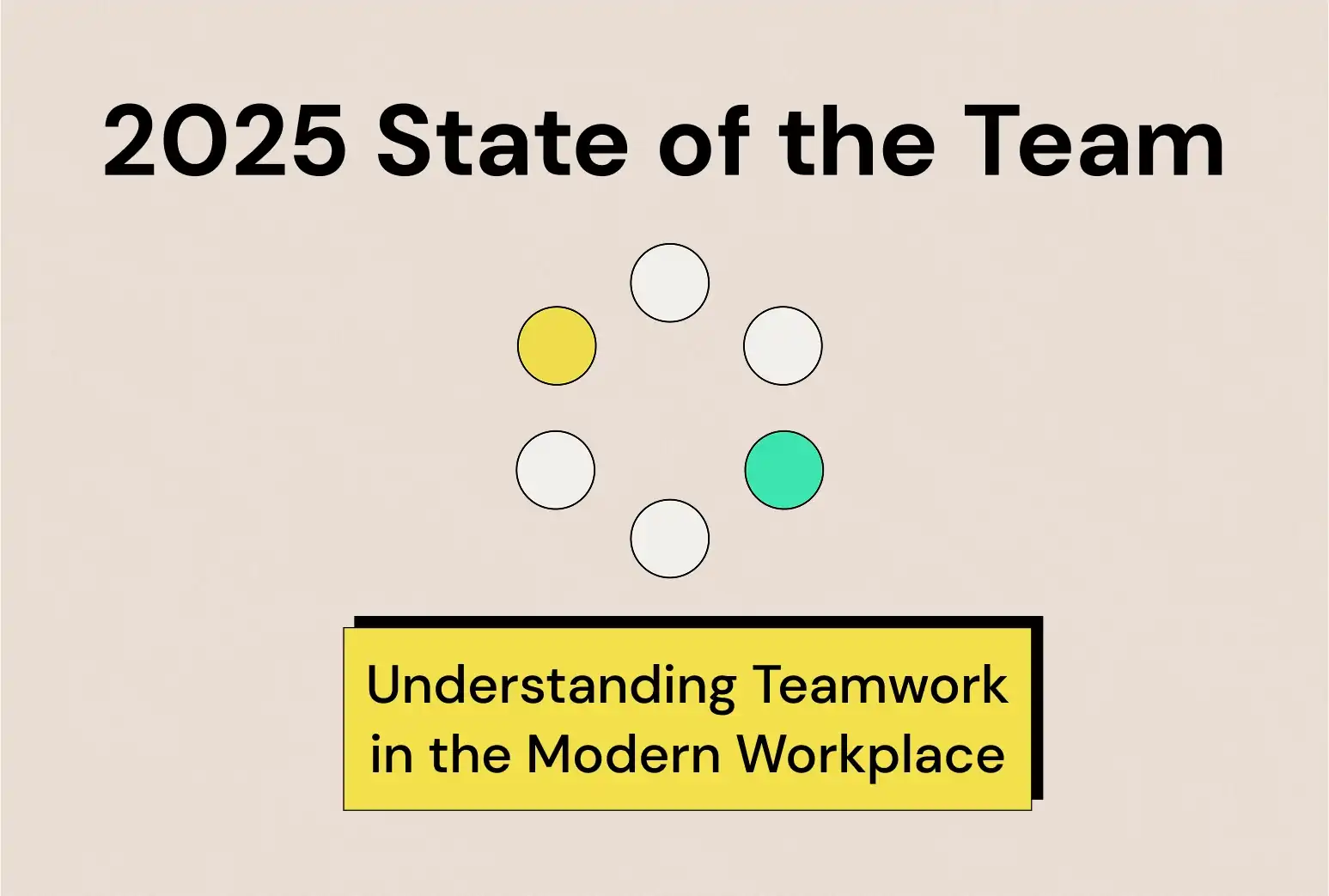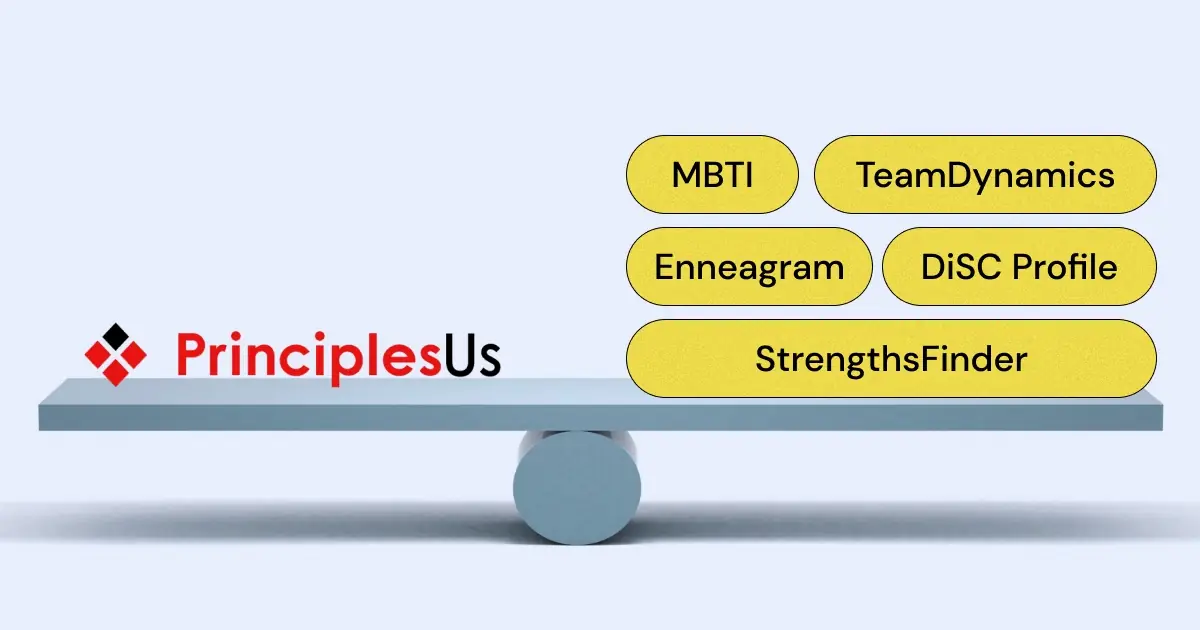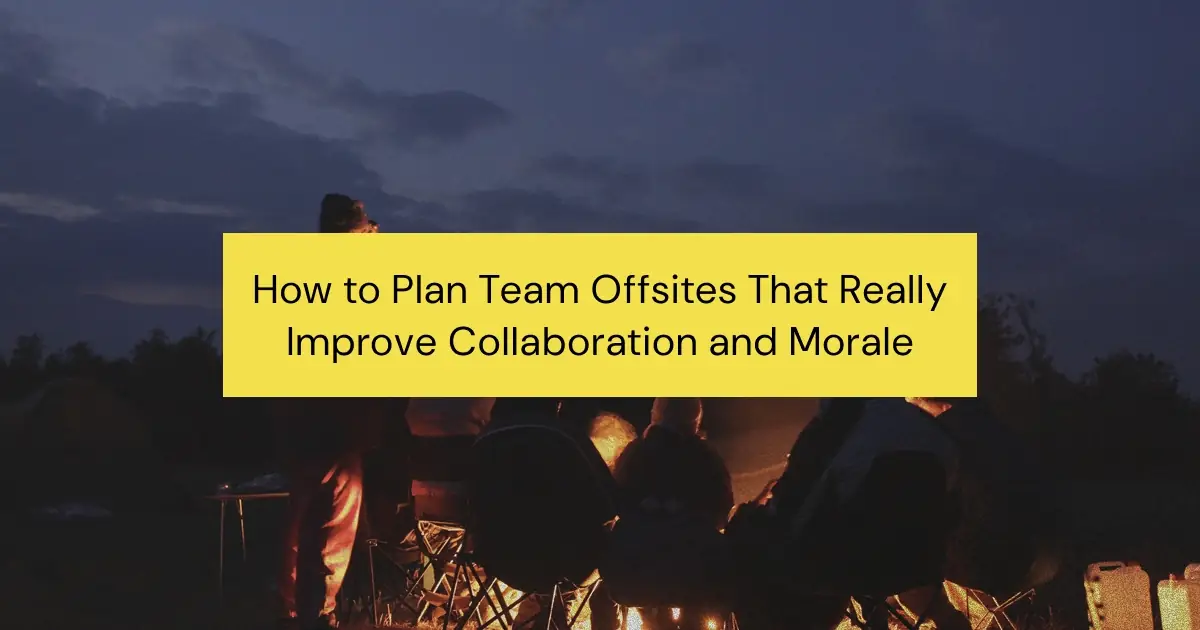Every team processes information differently. Some teams focus on facts, data, and logic to make decisions. Others rely on relationships, trust, and interpersonal dynamics to evaluate information. These two styles—logical thinking and relational thinking—shape how teams interpret new ideas, solve problems, and collaborate effectively.
Understanding these differences matters. If a team leans too heavily toward one style, they risk poor communication, slow decision-making, or internal conflict. A team of purely logical thinkers might ignore interpersonal dynamics and struggle with buy-in. A team dominated by relational thinkers might prioritize harmony over facts, leading to biased decision-making. The best teams find a balance.
That’s where TeamDynamics comes in. Unlike typical personality tests that focus on individuals, TeamDynamics helps managers understand how their entire team processes information. By identifying whether your team skews logical or relational, you can adjust leadership strategies, improve collaboration, and make better decisions.
Logical vs. Relational Thinkers: How Different Teams Process Information
Picture this: Two teams get the same data on a potential new product. One team debates the numbers, challenges every assumption, and meticulously runs through pros and cons before making a decision. The other team immediately turns to their most experienced colleague and asks, “What do you think?”
This difference comes down to logical vs. relational thinking—one of the biggest factors shaping how teams interpret information and make decisions. Logical teams focus on facts and objective reasoning, while relational teams rely on trust and interpersonal connections. Neither approach is better, but if your team leans too far one way, you’re likely leaving blind spots in your decision-making.
Understanding how your team processes information isn’t just an intellectual exercise—it’s a practical advantage. If your team systematically weights data over intuition, you might miss crucial human insights. If personal relationships drive too many decisions, your team risks bias and inconsistency.
{{inline-cta}}
So, is your team analytical and data-driven? Or people-focused and relationship-first? Let’s break down the two sides of information processing—and how understanding them can make you a better leader.
What Is Logical vs. Relational Thinking?
When teams process information, they usually lean toward one of two styles: logical thinking or relational thinking. These two approaches shape how teams evaluate ideas, make decisions, and ultimately work together.
Some teams focus on logic. They evaluate information based on facts, data, and structured reasoning. Others rely on relationships, where trust, personal experiences, and who delivers the message matter just as much as the message itself.
Neither style is "right" or "wrong," but teams that don’t understand how they process information can run into unnecessary conflict. Let’s break down the key differences.
Logical Thinkers in Teams
Logical thinkers look at the evidence. They focus on what is objectively true, no matter who said it or how the message was delivered. If a teammate presents an argument, a logical thinker will judge it based on details, reasoning, and factual accuracy—not on the person presenting it.
Strengths of logical-thinking teams:
✅ Clear and consistent decision-making
✅ Fewer emotional biases
✅ Heavy emphasis on reasoning and data
Challenges:
⛔ Can feel cold or impersonal in discussions
⛔ May overlook team morale or interpersonal dynamics
⛔ Struggle when data is unclear or unavailable
Example: Imagine a leadership team deciding whether to launch a new product. A logically-driven team asks, “What does the market data say?” rather than worrying about whether the idea came from a senior executive or a junior employee.
This approach leads to objective, well-reasoned decisions—but if handled poorly, it can make team members feel unheard if they rely more on instinct and personal experience.
Relational Thinkers in Teams
Relational thinkers consider the who just as much as the what. They process information through the lens of relationships, trust, and team dynamics. If a trusted colleague shares an idea, they’re more likely to value it. If someone they don’t connect with offers input, they might instinctively dismiss it—even if it’s well-reasoned.
Strengths of relational-thinking teams:
✅ Strong team cohesion and trust
✅ Effective at handling conflict and emotions
✅ Better at considering the human impact of decisions
Challenges:
⛔ Risk of bias toward familiar voices (rather than objective facts)
⛔ Decisions can become inconsistent or unpredictable
⛔ Harder to challenge team norms or unpopular opinions
Example: Let’s say a tech team is deciding on a new workflow. A relational-thinking team might prioritize what feels best for the group, even if an alternative approach is backed by data. If a well-liked leader suggests a plan, the team may accept it easily, even if it isn’t the most efficient choice.
This builds trust but can lead to emotional decision-making—and a reluctance to challenge bad ideas.
Cognitive Diversity in Teams and Its Benefits
Here’s the truth: Teams that lean too hard in one direction—either fully logical or entirely relational—miss out on better solutions.
A logical team might dismiss valid concerns because they don’t fit neatly into a spreadsheet. A relational team might shy away from hard decisions because they don’t want to upset anyone.
The best teams don’t force people to think the same way. Instead, they build a balance, ensuring that facts and personal dynamics both matter.
💡 A software engineering team that blends logical and relational thinking might structure meetings to allow fact-driven analysis while also ensuring everyone’s input is valued. That way, both clear reasoning and emotional intelligence shape the final decision.
How Teams Process Information: Logical vs. Relational Thinking in Action
How a team processes information affects how it makes decisions. Some teams rely on logic and data. Others depend on relationships and trust. Neither approach is "right" or "wrong," but they lead to very different ways of working.
- Logical teams rely on facts to make decisions. They value research, measurable outcomes, and clear reasoning. A software engineering team, for example, might use structured A/B testing to decide which product feature works best. They trust the numbers over individual opinions.
- Relational teams emphasize trust and group alignment. These teams make decisions based on collective agreement and the opinions of key individuals. A consulting firm, for instance, may decide to pursue a project because a senior partner—who has deep client relationships—believes it's worth doing, even without hard data.
- Hybrid teams must navigate both approaches. If half the team wants data and the other half wants consensus, decision-making can stall. The best hybrid teams set clear decision-making rules, acknowledging both hard facts and social input.
If you’ve ever been frustrated that some colleagues need “proof” while others need “buy-in,” this is why. Recognizing your team’s natural tendency can help fix slow or ineffective decision-making.
The Connection Between Processing Style and Team Communication
How people process information shapes how they communicate. If your team struggles with misunderstandings, it could come down to mismatched thinking styles.
- Logical thinkers explain their reasoning. They expect colleagues to evaluate an argument based on the facts. If a product manager presents a market analysis, they assume people will challenge the data—not whether they trust them personally.
- Relational thinkers focus on the messenger. They factor in who is speaking, how they feel about it, and whether the person is respected. In a team where relationships matter more, someone might accept an idea just because a trusted leader proposed it.
These differences can create tension. A logical-thinking engineer may get frustrated when a business leader dismisses data in favor of intuition. Meanwhile, a relational-thinking executive might find the engineer’s approach overly rigid and detached from reality.
Good leaders bridge this gap. If you're managing a logical-heavy team, make space for relationship-based discussions. If you're managing a relational-heavy team, push for structured analysis. Your job isn’t to "fix" how people think. It’s to help them understand how their team prefers to process information—so they can communicate and collaborate more effectively.
Improving Team Collaboration Through Awareness of Logical vs. Relational Thinking
Teams work best when they understand their strengths and weaknesses. Knowing how your team processes information—whether through logical analysis or relational context—helps you avoid misunderstandings, improve decision-making, and get better results. Here’s how to make sure your team isn’t letting its thinking style hold it back.
Strategies for Logical-Heavy Teams to Improve Collaboration
Logical-heavy teams thrive on data, structured arguments, and objective reasoning. But focusing only on facts can make them seem cold or dismissive. Information from sources they don’t trust emotionally—such as frontline employees or external stakeholders—might get ignored, even if it’s valuable.
What to do:
✅ Prioritize relationships, not just facts. Take time to build trust with colleagues. A well-supported team is more likely to share essential insights.
✅ Make space for unstructured discussions. Not every important idea comes in a neatly formatted report. Host team conversations that allow for personal perspectives.
✅ Recognize soft skills as real skills. Emotional intelligence, intuition, and lived experience can strengthen a decision just as much as raw data.
🔹 Example: A consulting team relies strictly on reports to assess a client’s needs. They dismiss employee feedback because it’s “too anecdotal.” As a result, they miss a key cultural issue impacting performance. By incorporating human insights alongside data, they get a clearer picture and propose a better solution.
Strategies for Relational-Heavy Teams to Improve Collaboration
When a team relies too much on relational processing, decisions can feel personal. People’s opinions carry weight based on who they are, not necessarily the strength of their argument. This can lead to groupthink, where bad ideas don’t get challenged because no one wants to disrupt harmony.
What to do:
✅ Base decisions on facts, not just trust. Push your team to support opinions with evidence rather than relationships.
✅ Play devil’s advocate. Assign team members to question assumptions, especially when decisions feel too consensus-driven.
✅ Create structured decision-making rules. Clear frameworks help separate personal feelings from professional choices.
🔹 Example: A product team leans heavily on internal feedback from trusted colleagues but doesn’t test externally with users. Because of this, they launch a feature that customers don’t actually find helpful. By introducing structured user research methods, they reduce personal bias and make smarter decisions.
How TeamDynamics Can Help
Most personality tests focus on individuals. TeamDynamics is different. It helps managers understand their team’s collective behavior, including how they process information.
With TeamDynamics, you can:
✅ Identify if your team leans logical or relational in decision-making.
✅ Learn where blind spots may be limiting communication and collaboration.
✅ Get practical strategies tailored to your team’s unique thinking style.
A team that understands its own processing style has an automatic advantage. It avoids slow decision-making, unnecessary conflict, and missed opportunities. Take the TeamDynamics personality test today and help your team work smarter.
Why Individual Personality Tests Aren't Enough
Popular personality tests like MBTI, StrengthsFinder, and Enneagram focus on individuals. But teams don’t succeed (or fail) based on one person's personality. Success comes from how a team works together as a unit. That’s why TeamDynamics is different.
Instead of labeling individuals, TeamDynamics categorizes entire teams based on how they communicate, process information, make decisions, and execute plans. This means managers can understand their team’s processing style and adjust their leadership approach accordingly.
Why This Matters for Managers
If you’re leading a team, you need to know how people interpret ideas, prioritize discussions, and make decisions. Are they swayed by relationships and personal trust, or do they focus on logic and hard data?
Imagine leading a highly relational team—people value trust, personal connections, and social cues. If you push purely data-driven decisions, you’ll face resistance. They won’t say it outright, but they’ll hesitate, question sources, or go silent in meetings.
On the other hand, if your team is highly logical, they may steamroll over interpersonal concerns. They might dismiss valid insights just because they come from a more junior teammate or someone outside their usual circle. This can kill creativity and morale fast.
You can’t fix what you don’t see. That’s why understanding your team’s processing style is a game-changer.
Real-World Example: Logical vs. Relational Teams in Action
Imagine you lead a product team at a growing tech startup. Some teammates rely on hard data, while others make decisions based on past experiences and relationships. A new feature is up for discussion:
- The logical thinkers pull up user analytics, funnel conversion rates, and A/B test results. The numbers drive their decision.
- The relational thinkers focus on customer feedback, the CEO's instincts, and past interactions with key stakeholders.
Who’s right? Both perspectives matter. But if your team always defaults to one side, you'll either:
- Ignore valuable data and make gut-based decisions that don’t scale.
- Overanalyze everything and lose sight of customer needs.
With TeamDynamics, you can see exactly where your team leans and identify gaps. If you're overly relational, you can introduce more structured decision-making. If you're overly logical, you can build stronger relationships and factor in intuition.
What TeamDynamics Tells You
When your team takes the TeamDynamics personality test, you’ll get a clear picture of where your team lands on the Logical vs. Relational scale—along with three other key dimensions of teamwork.
👉 If your team skews logical, you’ll learn strategies to build trust and improve emotional awareness.
👉 If your team skews relational, you’ll get tactics for adding structure and keeping decision-making objective.
Instead of guessing why things feel “off” in meetings or why certain discussions aren’t productive, TeamDynamics gives you a blueprint tailored to how your team thinks and operates.
Take the Test—Level Up Your Leadership
If you’re serious about improving your team’s performance, start by understanding how they think. Take the TeamDynamics test today to get a personalized breakdown of your team’s strengths and blind spots. Once you know your team’s processing style, you can lead with more confidence—and get better results.
👉 Find out your team’s type now.
Conclusion
Your team’s success depends on how it processes information, and that starts with understanding the mix of logical and relational thinkers on your team. Logical thinkers focus on facts and data, while relational thinkers consider trust and relationships. Both styles have strengths—and blind spots.
Teams that lean too far in either direction can struggle. Logical-heavy teams risk overlooking group dynamics and missing valuable insights from their teammates. Relational-heavy teams may let personal relationships cloud judgment or struggle to challenge bad ideas. The best-performing teams aren’t one or the other—they know how to balance both perspectives to make better decisions.
As a manager, you need to know which way your team leans. Are you making decisions based on facts or feelings? Are ideas judged on their merits or who said them? Getting these answers will help you improve communication, decision-making, and collaboration on your team.
That’s where TeamDynamics can help. Instead of analyzing personalities, it reveals how your team processes and acts on information as a group. Take the free TeamDynamics personality test today to see where your team stands—and how you can make it stronger. 🚀


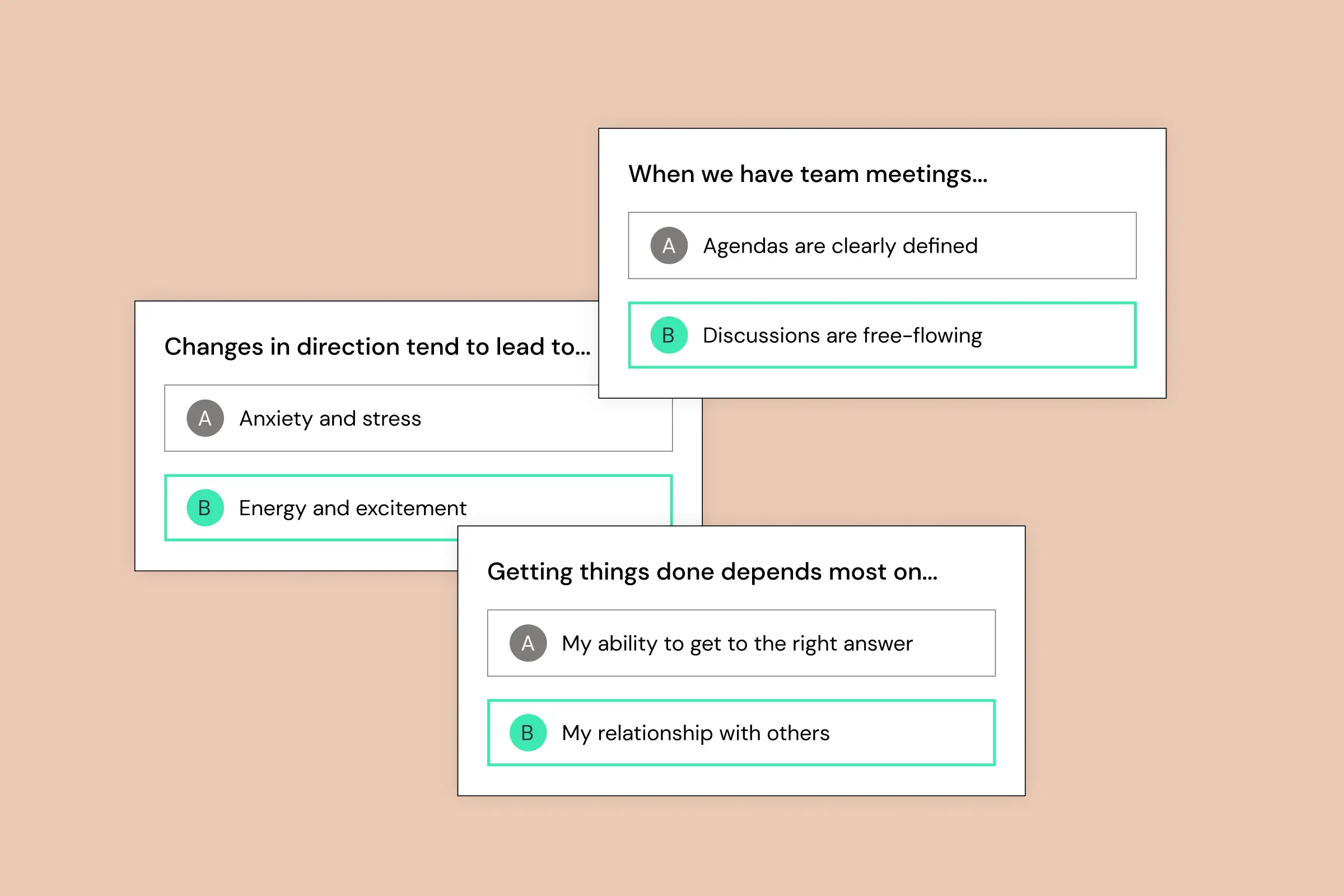

.png)
